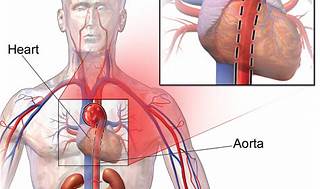A nurse is reviewing the arterial blood gas (ABG) values of a client who has chronic kidney disease. Which of the following sets of values should the nurse expect?
pH 7.25, HCO3- 19 mEq/L, PaCO2 30 mm Hg
pH 7.50, HCO3- 20 mEq/L, PaCO2 32 mm Hg
pH 7.55, HCO3- 30 mEq/L, PaCO2 31 mm Hg
pH 7.30, HCO3- 26 mEq/L, PaCO2 50 mm Hg
The Correct Answer is A
Choice A reason:
This set of values indicates metabolic acidosis, which is common in chronic kidney disease due to the accumulation of acids in the body as the kidneys fail to eliminate them effectively³.
Choice B reason:
A pH of 7.50 is considered alkalotic, and while HCO3- and PaCO2 are within normal ranges, this set of values does not typically represent chronic kidney disease.
Choice C reason:
A pH of 7.55 is also alkalotic, and an HCO3- of 30 mEq/L indicates metabolic alkalosis, which is not characteristic of chronic kidney disease.
Choice D reason:
While a pH of 7.30 is on the lower end of the normal range, an HCO3- of 26 mEq/L is within the normal range, and a PaCO2 of 50 mm Hg indicates respiratory acidosis, not typically seen in chronic kidney disease without concurrent respiratory issues.
Nursing Test Bank
Naxlex Comprehensive Predictor Exams
Related Questions
Correct Answer is ["A","B","C","E","F"]
Explanation
Choice A: Shortness of breath Shortness of breath can occur with a TAA due to the aneurysm compressing the trachea or the lung tissue. As the aneurysm enlarges, it can impinge on respiratory structures, leading to difficulty in breathing. A thoracic aortic aneurysm (TAA) is a bulging or dilation in the wall of the aorta as it passes through the chest cavity. TAAs can be life-threatening if they rupture or dissect and are often difficult to detect because they tend to grow slowly and usually do not cause symptoms until they become large or rupture.
Choice B: Difficulty swallowing Difficulty swallowing, or dysphagia, may be experienced if a TAA exerts pressure on the esophagus. This can happen when the aneurysm is located in the aortic arch, where the esophagus is in close proximity.
Choice C: Upper chest pain Upper chest pain is a common symptom of TAA and may be described as a deep, steady pain that can radiate to the back, neck, or jaw. The pain is caused by the stretching of the aortic wall and may be a warning sign of an impending rupture.
Choice D: Diaphoresis Diaphoresis, or excessive sweating, is not typically a direct symptom of a TAA. However, it can be associated with acute aortic syndromes, such as aortic dissection or rupture, which are medical emergencies.
Choice E: Cough A persistent cough can be a sign of a TAA, especially if the aneurysm is pressing against the trachea or bronchial tubes. The cough may sometimes produce blood if the aneurysm is causing erosion into these structures.
Choice F: Hoarseness Hoarseness can result from a TAA if the aneurysm compresses the recurrent laryngeal nerve, which controls the muscles of the voice box. This is known as Ortner’s syndrome or cardiovocal syndrome.


Correct Answer is C
Explanation
Choice A: RBC count The red blood cell (RBC) count is not typically decreased by hemodialysis. Hemodialysis does not remove cells from the blood. However, patients with chronic kidney disease often have anemia, which is a low RBC count, due to a decrease in the production of erythropoietin by the kidneys. Erythropoietin is a hormone that stimulates the bone marrow to produce RBCs. Anemia in these patients is treated with erythropoiesis-stimulating agents, not dialysis.
Choice B: Protein Protein levels are not directly affected by hemodialysis. However, patients on hemodialysis may have lower protein levels due to dietary restrictions or protein loss during the treatment. It is important for patients to manage their protein intake to prevent malnutrition and maintain overall health.
Choice C: Potassium Potassium levels are expected to decrease following hemodialysis. Potassium is an electrolyte that is normally filtered out by the kidneys. In patients with kidney failure, potassium levels can build up in the blood and cause serious heart problems. Hemodialysis removes excess potassium from the blood, which helps to prevent complications such as cardiac arrhythmia. The normal range for serum potassium is 3.5 to 5.0 mmol/L. After a hemodialysis treatment, a nurse should expect to find a decrease in potassium levels in the laboratory data of a client. This is because hemodialysis effectively removes excess potassium, which can accumulate in the blood due to reduced kidney function. Maintaining proper potassium levels is crucial for preventing heart complications in patients with kidney failure.
Choice D: Calcium Calcium levels are not typically decreased by hemodialysis. In fact, calcium levels can be affected by the dialysate used during hemodialysis. Some dialysates contain calcium, and this can actually increase the patient’s blood calcium levels. Patients with kidney failure may also have secondary hyperparathyroidism, which affects calcium levels, and they may be treated with calcium supplements or vitamin D analogs to manage their calcium levels.
Whether you are a student looking to ace your exams or a practicing nurse seeking to enhance your expertise , our nursing education contents will empower you with the confidence and competence to make a difference in the lives of patients and become a respected leader in the healthcare field.
Visit Naxlex, invest in your future and unlock endless possibilities with our unparalleled nursing education contents today
Report Wrong Answer on the Current Question
Do you disagree with the answer? If yes, what is your expected answer? Explain.
Kindly be descriptive with the issue you are facing.
